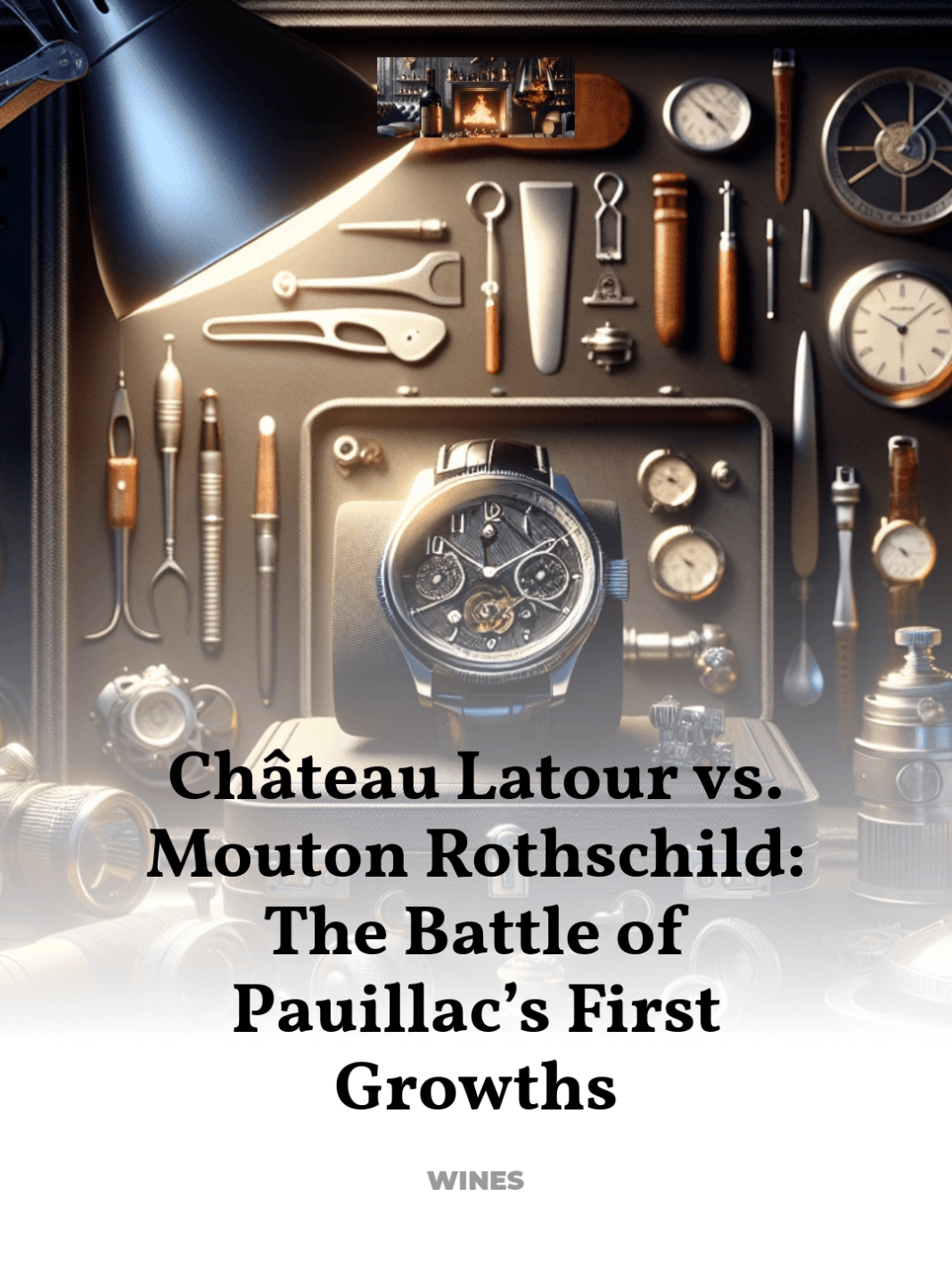Contrasting Styles of Two Bordeaux Giants
The revered vineyards of Pauillac, a prestigious appellation in Bordeaux, France, are home to some of the most illustrious wines in the world, including Château Latour and Château Mouton Rothschild. These two wineries, with their rich histories and distinctive styles, represent the pinnacle of luxury and craftsmanship in the wine industry.
- Historical Legacy: Foundations of Two Titans
- Winemaking Philosophies: Art Meets Science
- Tasting Notes: Decoding Complexity
- Cultural Impact: Beyond the Bottle
- Collecting and Appreciation: The Art of Wine
- Final Thoughts: A Tale of Two Châteaux
Historical Legacy: Foundations of Two Titans
The histories of Château Latour and Château Mouton Rothschild are as rich and complex as the wines they produce. Château Latour, with its iconic tower presumed to date back to the 14th century, has been a beacon of unyielding quality since the estate was established. Its reputation was so esteemed that it was classified as a First Growth in the 1855 Bordeaux Wine Official Classification, an accolade that marks its legacy.
Château Mouton Rothschild, not to be outdone, has its own storied past. Originally known as Château Brane-Mouton, it was renamed by Nathaniel de Rothschild in 1853 after his purchase. It was initially excluded from the First Growth status in 1855 but was elevated in 1973 after decades of relentless advocacy by Baron Philippe de Rothschild, a testament to the estate’s quality and his indefatigable spirit.
Both estates have been at the forefront of viticulture and winemaking innovation while maintaining deep respect for tradition. This blend of reverence for the past with a push towards the future defines their storied histories and continued success.
Winemaking Philosophies: Art Meets Science
The winemaking processes at Château Latour and Château Mouton Rothschild, while rooted in traditional methods, each reflect their unique philosophies. Château Latour focuses on producing wines that are powerful yet refined, with a structure that allows them to age for decades. The estate’s approach is meticulous, with an emphasis on environmental sustainability. They employ organic practices and are moving towards biodynamic certification.
Conversely, Château Mouton Rothschild is renowned for its artistic flair, not only in winemaking but also in the presentation of their product. Each vintage’s label is designed by a contemporary artist, making each bottle a collector’s item. Their winemaking is innovative, with a state-of-the-art vat room that allows for precise control over the fermentation process. This technological advancement complements their traditional methods, such as hand-picking grapes and aging the wine in oak barrels sourced from their own cooperage.
Both wineries harness their deep understanding of the Pauillac terroir, with its deep gravel beds and ideal maritime climate, to grow Cabernet Sauvignon, Merlot, and other varieties that form the backbone of their prestigious blends.
Tasting Notes: Decoding Complexity
The wines of Château Latour and Château Mouton Rothschild are celebrated for their complexity and depth. Château Latour’s wines are often described as robust and tannic in their youth, with flavors of blackcurrant and cedar, evolving into nuanced bouquets of tobacco, leather, and earthy notes as they age. The estate’s Grand Vin, particularly from vintages like 1961 or 1982, showcases this transformative power.
Château Mouton Rothschild, on the other hand, is known for its opulent, sometimes exotic profile. The wines frequently exhibit a richer, more intense fruitiness when young, with a lavish use of oak that imparts additional vanilla and spice nuances. Over time, these characteristics meld to produce beautifully balanced wines with hints of mocha, graphite, and savory spices, as seen in legendary vintages like 1945 and 1986.
Each sip of wine from these estates tells a story of meticulous craftsmanship and terroir-driven artistry, a narrative that unfolds on the palate with each vintage.
Cultural Impact: Beyond the Bottle
The influence of Château Latour and Château Mouton Rothschild extends far beyond their vineyards. Both châteaux are not only landmarks in the world of fine wine but also symbols of cultural heritage and artistic patronage. Château Mouton Rothschild’s tradition of commissioning artists to design their labels has involved figures such as Pablo Picasso, Andy Warhol, and Prince Charles, bridging the gap between fine art and viticulture.
Château Latour, while more understated, commands respect through its consistent presence in the global arena as a standard-bearer of quality and longevity. The wines themselves are ambassadors of French culture, served at state dinners and coveted by collectors around the world.
Collecting and Appreciation: The Art of Wine
Collecting wines from Château Latour and Château Mouton Rothschild is not merely an oenophilic pursuit but a connoisseurship that verges on art collection. Each bottle from these estates is a piece of history, embodying the climatic conditions, winemaking innovations, and artistic expressions of its vintage year.
Enthusiasts and collectors cherish these wines for their potential to evolve, providing not just a sensory experience but also a dynamic engagement with time itself. The act of collecting, aging, and eventually tasting these wines offers a unique blend of anticipation, memory, and discovery, making each vintage a revered addition to any collection.
Final Thoughts: A Tale of Two Châteaux
The stories of Château Latour and Château Mouton Rothschild are marked by their legendary vintages, distinctive winemaking styles, and profound cultural impacts. While each maintains its unique identity, together they represent the zenith of Pauillac winemaking and the enduring allure of Bordeaux wines.
Their continued dedication to quality, innovation, and artistic expression ensures that each vintage not only reflects the legacy of the past but also embraces the potential of the future. In the world of fine wines, Château Latour and Château Mouton Rothschild stand not merely as competitors but as complementary forces that continue to elevate the standards of viticulture and enology.
For further exploration of these prestigious estates, visit authoritative sources such as the official Château Latour and Château Mouton Rothschild websites, or delve into detailed reviews and historical accounts available through respected wine publications.



